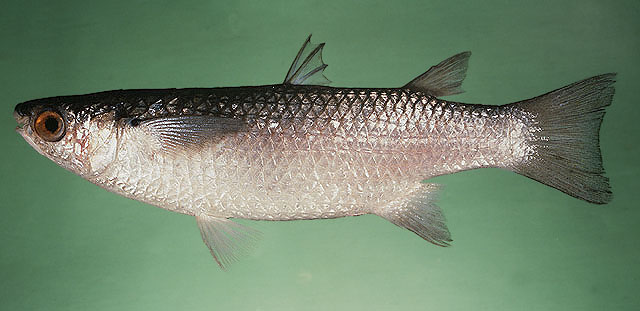| Mugilidae (Mullets) |
| 40 cm SL (male/unsexed) |
|
reef-associated; marine; depth range 0 - 3 m |
| Indo-Pacific: Red Sea to the Marshall Islands, north to southern Japan, south to the southern Great Barrier Reef and New Caledonia; throughout Micronesia. |
|
Dorsal spines (total): 4-4; Dorsal soft rays (total): 9-10; Anal spines: 3-3; Anal soft rays: 9-9. Olive dorsally; silvery ventrally (Ref. 9812).
Description: Characterized by having whitish fins; cycloid or weakly ctenoid scales; snout shorter than eye diameter; very thick upper lip; deep longitudinal fold near ventral edge on upper lip, splitting lip into upper and lower lobes fringed with ridges of horny epidermis; thin and directed forward lower lip fringed with ridges of horny epidermis; upper and lower lip folds tucked under preorbital at corners of mouth; absence of adipose eyelid; deeply notched preorbital on anteroventral edge; emarginate caudal fin (Ref. 90102). |
| Occur in coastal waters, mainly in reef flats and shallow lagoon reefs; often in silty habitats Form schools at the surface (Ref. 9710, 48637). Usually swimming in surface waters near freshwater run-offs. Oviparous, eggs are pelagic and non-adhesive (Ref. 205). Used as live bait in pole-and-line tuna fishing (Ref. 9812). |
|
Not Evaluated (N.E.) Ref. (130435)
|
| harmless |
Source and more info: www.fishbase.org. For personal, classroom, and other internal use only. Not for publication.
